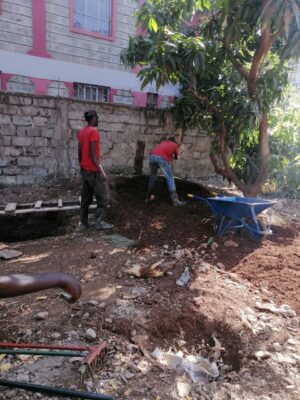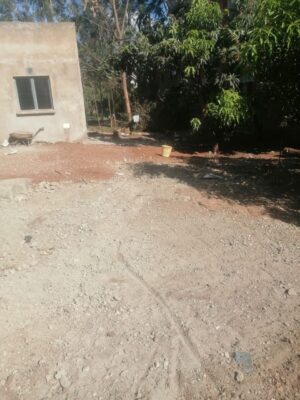
Every great outdoor space begins with proper land clearing. Whether you’re planning a beautiful garden, building a gazebo, laying turf, or preparing a driveway, the quality of your landscaping depends on how well the land was cleared. In Kenya, where soil types and vegetation vary widely, professionals ensures your site is clean, stable, and ready for transformation.
This process is not just about cutting bushes. It involves removing stumps, leveling uneven ground, improving drainage, and preparing the soil for whatever structure or greenery comes next. For landscaping businesses and property owners alike, understanding the importance of land clearing is crucial to achieving lasting results.
Why Land Clearing Is So Important
Proper clearing has both aesthetic and structural benefits:
- Prepares the Ground for Landscaping
It ensures the site is smooth, well-drained, and clean — ready for gardens, lawns, driveways, or outdoor living spaces. - Improves Soil Quality
By removing weeds and invasive plants, land clearing allows the soil to breathe and supports healthy plant growth. - Prevents Pests and Diseases
Bushy, uncleared spaces can harbor pests and termites. Clearing removes their hiding places and reduces the risk of infestation. - Enhances Safety
A cleared site is safer to work on and less likely to cause injuries or accidents during construction or planting. - Increases Property Value
Clean, well-prepared land improves the visual appeal and value of your property.
Steps Involved in Land Clearing
Professional land clearing follows a structured process to ensure the best results.
1. Site Assessment
Before starting, the land is surveyed to understand vegetation type, terrain, existing structures, and soil conditions. This helps in choosing the right clearing method.
2. Marking and Planning
The area to be cleared is marked out. This prevents accidental removal of trees or features meant to be preserved in the final landscaping plan.
3. Removal of Bushes and Vegetation
Small plants, weeds, and undergrowth are cleared first. This is often done using slashers, machetes, or brush cutters.
4. Tree Felling and Stump Removal
Larger trees are felled strategically, and stumps are uprooted to create a clean surface. This is one of the most critical stages of land clearing.
5. Debris Removal and Leveling
All organic waste, rocks, and rubble are collected and either recycled or disposed of properly. The land is then leveled to ensure proper drainage and stability.
6. Soil Preparation
Depending on the intended use, topsoil may be added or compacted. If the site is for gardening, red loam soil can be spread to improve plant growth.
7. Final Inspection
The cleared site is inspected to confirm that it meets the landscaping requirements.
Types of Land Clearing Methods
There are several methods used in land clearing, depending on the project size and budget:
- Manual Land Clearing – Best for small plots or sensitive areas where certain plants or trees need to be preserved.
- Mechanical Land Clearing – Involves use of machinery like bulldozers and excavators for large-scale projects.
- Chemical Land Clearing – Applied in limited situations to control stubborn stumps or weeds.
- Controlled Burning – Rarely used in urban Kenya due to safety and environmental concerns, but sometimes applied in rural areas with strict control.
Land Clearing in Kenya: Local Considerations
In Kenya, land clearing must be done responsibly and in line with environmental regulations. Some key factors include:
- Soil Type: Red soil is common in many parts of Kenya and is ideal for gardening after proper leveling.
- Drainage: Sites should be graded to prevent waterlogging during heavy rains.
- Vegetation: Indigenous trees may need preservation permits before cutting.
- Waste Disposal: Burning debris in residential areas may not be allowed, so proper disposal or mulching is encouraged.
- Professional Help: Hiring experienced landscaping and land clearing experts ensures safety and quality.
Cost of Land Clearing in Kenya
The cost varies depending on:
- Size of the Land: Larger plots require more time, equipment, and labor.
- Type of Vegetation: Thick bush or large trees increase the cost.
- Access and Terrain: Steep or hard-to-access areas may require specialized equipment.
- Disposal Needs: Transportation and disposal of waste add to total costs.
In Nairobi and its surroundings, land clearing prices typically range from Ksh 15 to Ksh 40 per square meter for manual work and can be higher for mechanical clearing.
Why Hire Professionals for Land Clearing
While it may be tempting to clear land yourself, professional land clearing teams bring expertise and efficiency. They:
- Use the right equipment for faster, cleaner results.
- Minimize damage to the surrounding environment.
- Handle debris safely and in line with regulations.
- Prepare the site to match your landscaping vision.
- Save time, labor, and money in the long run.
A well-cleared site ensures that your landscaping project — whether a simple garden or a complex outdoor design — starts on the right foundation.

Sustainable Land Clearing Practices
Modern landscaping in Kenya increasingly focuses on eco-friendly methods. Some sustainable land clearing practices include:
- Selective Clearing: Preserving mature trees or indigenous plants.
- Recycling Organic Waste: Turning vegetation into mulch or compost.
- Erosion Control: Proper leveling and grading to prevent soil erosion.
- Replanting Plans: Incorporating cleared spaces into a green landscape design.
This approach protects the environment while creating beautiful, functional outdoor spaces.
Conclusion
Land clearing is the foundation of every successful landscaping project. It sets the stage for everything that follows — from laying lawns and pathways to planting trees and installing outdoor features. Done professionally, it enhances safety, improves soil quality, and saves you time and money in the long run.
If you’re planning a garden, lawn, or outdoor renovation in Kenya, invest in proper land clearing first. It’s the smartest and most important step toward creating a landscape that’s both beautiful and durable.

